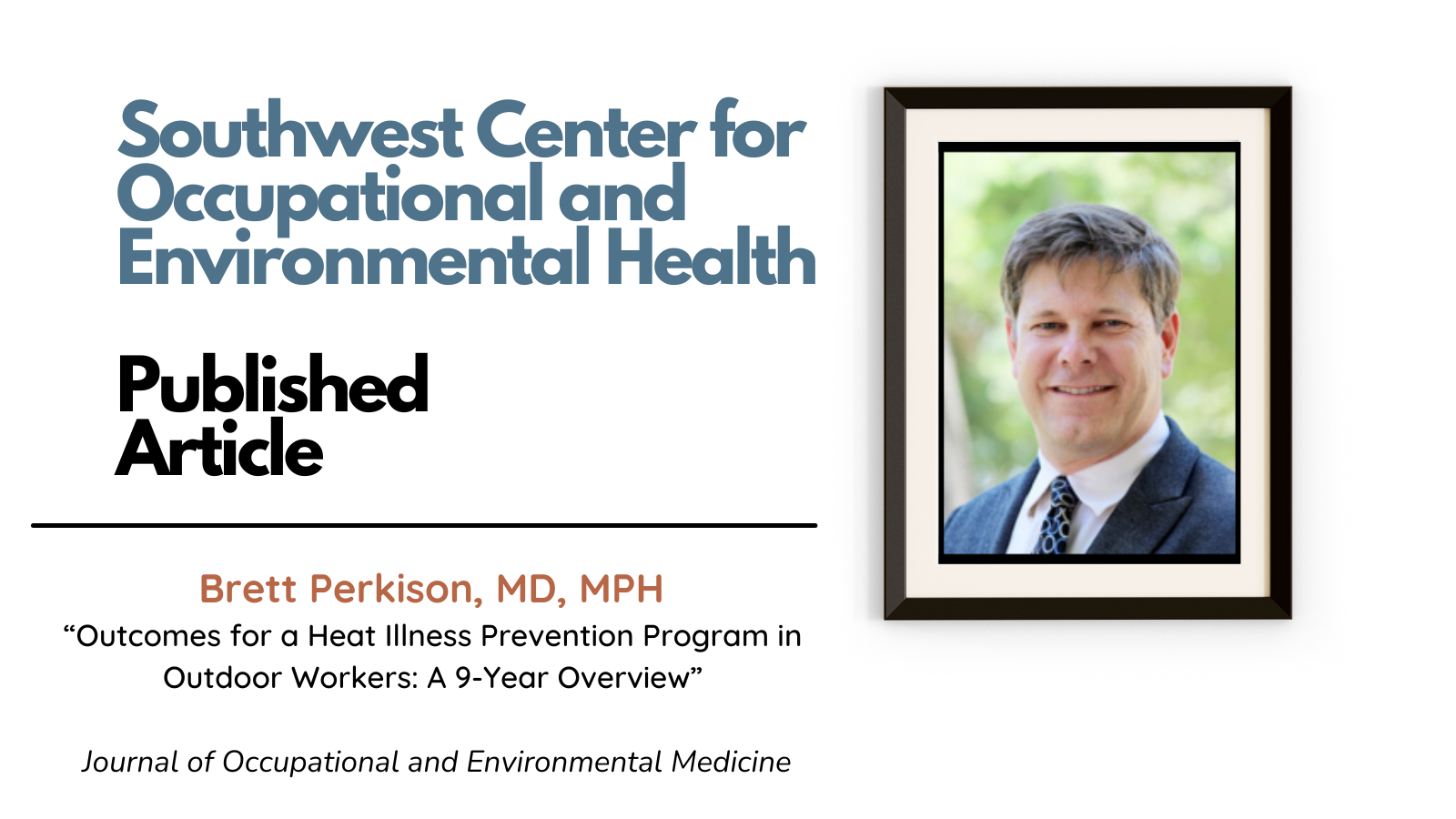
Dr. Brett Perkison publishes nine-year study on heat illness prevention in outdoor workers
William “Brett” Perkison, MD, MPH, the occupational medicine residency program director for the Southwest Center for Occupational and Environmental Health (SWCOEH), was the first author on a study of heat illness prevention in outdoor workers published in April by the Journal of Occupational and Environmental Medicine (JOEM).
The study, “Outcomes for a Heat Illness Prevention Program in Outdoor Workers: A 9-Year Overview”, examined the effects of removing the medical surveillance component from a heat illness prevention program (HIPP) for outdoor workers in Central Texas. The study found a decrease in heat related illness (HRI) after four years of the heat illness prevention program (HIPP).
“The decrease in heat related illness is attributed to the implementation of the heat illness prevention program,” Dr. Perkison said. “Its implementation of medical screening procedures and acclimatization helped to identify those most at risk for heat stress. Moreover, it allowed employers to either modify their duty, improve management of their medical condition, or properly acclimatize the employers to decrease heat related illness in their work environments.”
After four years, the study implemented a modified heat illness prevention program, which included training and acclimatization, but without medical surveillance. Aligning with the modification, heat related illness increased.
“Dropping the medical screening process prevented the medial surveillance group from identifying those most at risk for heat stress,” Dr. Perkison said.
Traditional public health surveillance approaches do not adequately capture the true impact of heat-related illness, especially in the occupational setting. This study attempted to address the shortage of accurate data.
“When people present to clinics and ERs for heat stress the coding is often for the symptoms they are having, such as dizziness, rapid heart rate, fainting etc.” Dr. Perkison said. “The heat related aspect of it gets missed unless it in the most severe of cases. Large-scale research is needed to test the statistical significance of these programs and evaluate program delivery methods across industries.”
“Employers are looking for ways of decreasing HRI in their workers without lowering productivity. This is especially urgent considering rising temperatures from climate change. Medical screening and surveillance programs have the potential to be a cost-effective way of accomplishing lowered HRIs without lowering productivity.”
The SWCOEH provides a variety of graduate-level training opportunities for occupational and environmental health professionals through our industrial hygiene, occupational and environmental medicine, occupational epidemiology, and Total Worker Health® programs.

